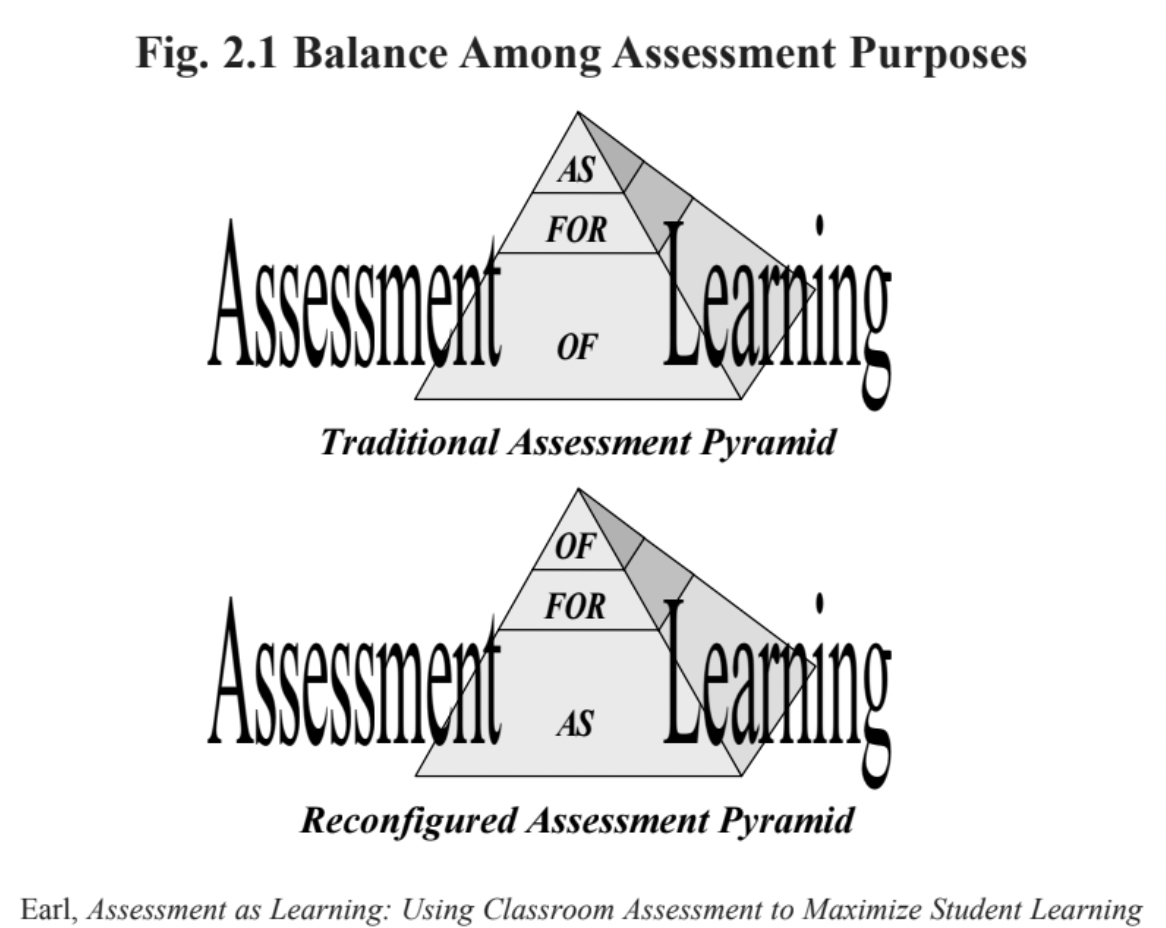Traditional vs. Reconfigured Assessment Pyramid: Illustrating My Journey as a Student and Teacher

The figure above is from the book Reading Classroom Assessment with Purpose in Mind by Manitoba Education, Citizenship and Youth. These illustrations resonate deeply with my own assessment experiences, both as a student and a teacher. Reflecting on the two models—Traditional vs. Reconfigured Assessment Pyramid—I can clearly see how traditional methods, often rigid and focused on standardized testing, shaped my early learning experiences. In contrast, as an educator, I've increasingly leaned toward the reconfigured model, which emphasizes formative assessment, student involvement, and a more holistic understanding of student progress. These shifts have transformed my approach to assessment, aligning more closely with my goal of fostering critical thinking and growth in my students.
As a student, I mostly experienced the traditional assessment pyramid. Assessments were primarily about measuring knowledge at the end of a unit. I was a passive interactor; the teacher lectured, and my role was to listen, take notes, and prepare for exams. This approach made learning feel one-sided and disconnected.
Now, as a teacher in the physics classroom, I strive to implement the Reconfigured Assessment Pyramid. My goal is to make students active participants in their learning. For example, instead of just using traditional tests, I use formative assessments like peer reviews, self-reflections, and hands-on experiments. This helps students engage with the material, apply concepts in real-world scenarios, and develop critical thinking skills.
I also believe 21st century assessments should be for the students, by the students. This involves letting them set learning goals and design assessment tasks, emphasizing student-centered learning, where assessments are designed to benefit their learning processes rather than just to measure their performance. For instance, I might have students create their own project that applies physics principles to solve a real-world problem.
Post a comment